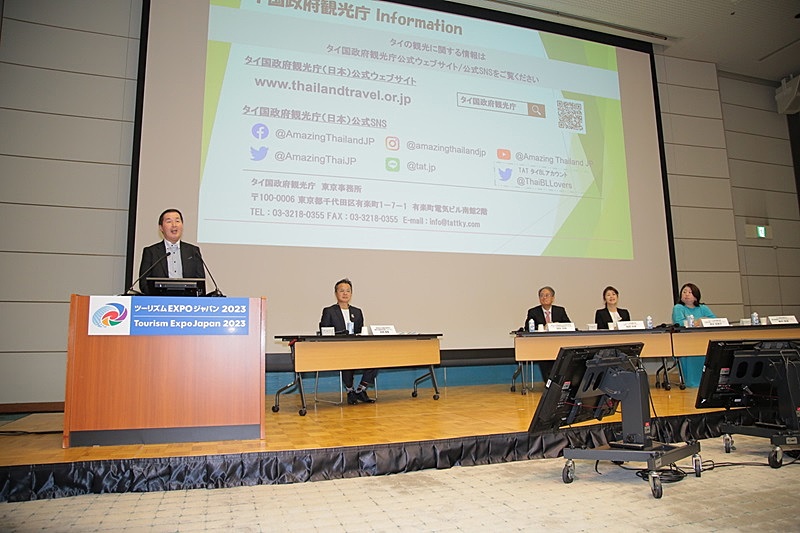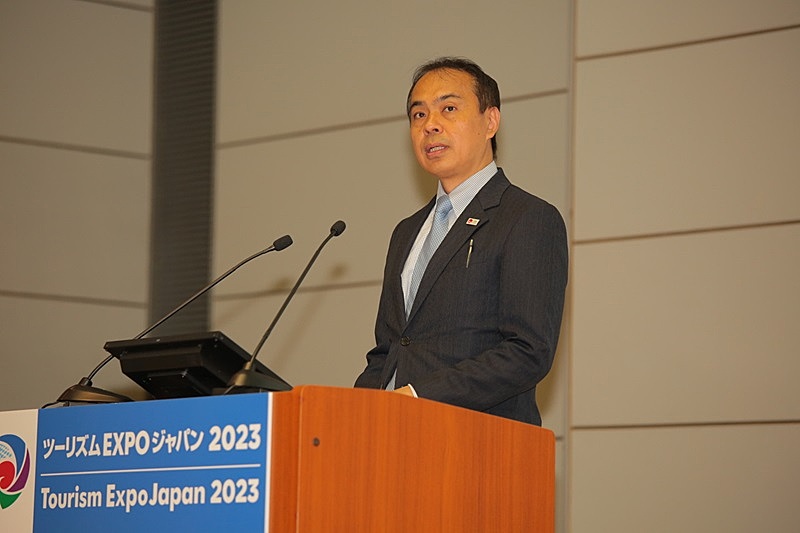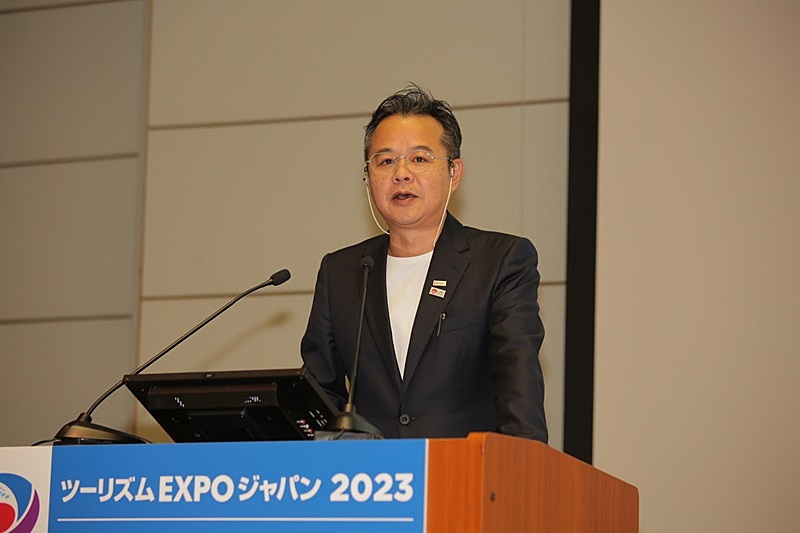
‘Symposium on Japanese outbound travel promotion’ at Tourism EXPO 2023 in Osaka focused on how the outbound travel market should be boosted, as a survey shows that 23 million Japanese people intend to travel abroad.
Japan Tourism Agency (JTA), a host of the symposium, revealed that the number of overseas travelers in Japan is just under 50% of pre-coronavirus levels as of the end of September, while inbound tourists have already recovered to over 70% of pre-coronavirus levels. JTA has formulated a policy package for early recovery in March 2023, with the goal of exceeding the pre-coronavirus level in the number of overseas travelers by 2025 in the New Tourism Nation Promotion Basic Plan.
Toshiya Miyazaki, team leader of the Mitsubishi Research Institute's Tourism Nation Achievement Support Team, reported the number of Japanese people who have traveled overseas is 55.4 million, accounting for 45% of the total, and of those, 6 million have traveled overseas after the coronavirus pandemic. The survey says that Japanese people who have traveled overseas before but have not yet traveled abroad after the coronavirus pandemic reach approximately 23 million. “We can expect a return to normal levels if we focus on such the people,” Miyazaki added.
He pointed out 20s males who are now eager to travel abroad and an increase in traveling alone as another trends.
The survey also finds that out of 67 million people who have not experienced overseas travel before, about 17 million people have an interest in overseas travel, and 10 million people live in rural areas where the rate of departure is low. Miyazaki said, “It is necessary to take some actions to the potential market for long-term revival, including improvement of accesses to local airports.”
 観光庁 石塚智之審議官
観光庁 石塚智之審議官
Spain, Thailand and Malaysia talk about the Japanese market
At a panel discussion, Yumi Kazama, Spanish Tourism Institute Tokyo Promotion Manager, Kimiko Shimizu, Malaysia Tourism Promotion Board Osaka Marketing Manager and Yoshiaki Fujimura, Tourism Authority of Thailand Tokyo Marketing Manager talked about the current situation of the Japanese markets. Malaysia and Thailand are both at 50% of their pre-coronavirus levels, and demand is slow to return compared to other countries, and in Spain, demand in Asia as a whole including Japan remains at 50%.
Kazama said, “Japan's share is 0.8%, but Spain rates Japan as a tourist that spends a lot of money.’' Japanese people's travel seasons do not overlap with the busy seasons in Europe and the United States. She said it also contributes to the decentralization of the tourist season.
Shimizu pointed out that the average tourist spending by Japanese people in Malaysia in 2022 was 165,000 yen, returning to pre-coronavirus levels. In 2022, 5,045 people held MM2H (Malaysia My Second Home), which is a long-term stay visa, and 3,016 people participated in the homestay program. She explained that educational travel is a field to grow.
Fujimura said, “Japanese solo travelers have been seen in Thailand more often since before the pandemic. The latest data by travel type shows that they account for 30% of the total.” In addition, when they conducted a promotion targeting 16 local prefectures from 2022 to 2023, they found that there were many travelers from Shizuoka and Miyagi prefectures, which have cities with which we have tourism exchange agreements. “It is important for us to increase travelers from local areas of Japan,’ he added.
 三菱総合研究所・観光立国実現支援チーム 宮崎俊哉チームリーダー
三菱総合研究所・観光立国実現支援チーム 宮崎俊哉チームリーダー
Domestic luxury hotels and ryokans have “absorbed” overseas travel demand
“The national travel support program was successful in directing demand for overseas travel to domestic travel,'' Yoshinori Ochi, a professor of Toyo University School of International Tourism, pointed out. “8.5 million overseas travelers in the Tokyo metropolitan area and the three Kansai prefectures of Osaka, Hyogo and Kyoto, are now flowing to high-end hotels and ryokans in Japan.”
“How do we ignite the desire to travel abroad in these markets? We need to provide contents that are ‘only now’’ or ‘only here,' such as festivals and flower viewing,’ he suggested.
Kazama said, “When Spain had the highest number of Japanese travelers at 680,000 people un 2019, two long holidays were a big factor.’' Fujimura said, “In Thailand, we are promoting new approaches such as wellness, but there is not enough recognition yet. Travel companies should not be bound by the traditional image of Thailand, and are proactively updating information to appeal to consumers.’'
Shimizu said, “There are times when charter flights departing from Japan from Malaysia are operated with empty seats, which I feel is a waste. I hope that we can take advantage of it to boost demand.’'
Ochi said, “Charter flights play an important role in stimulating demand and establishing scheduled flights. In order to maintain air routes that support two-way tourism, I would like to see overseas travel promoted as a national policy.”




